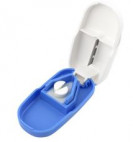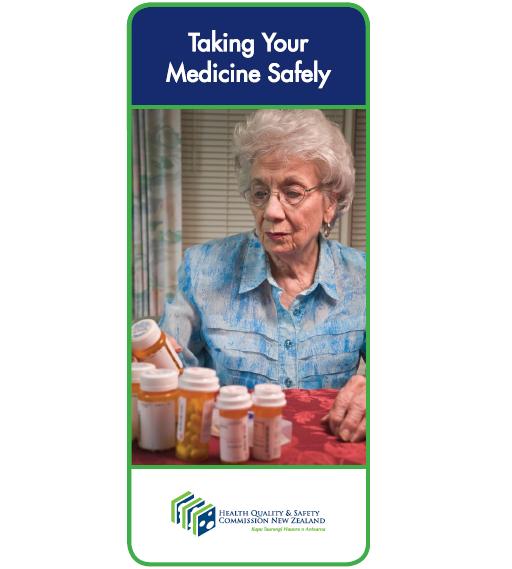| It's important that you know how to use your medicine. If you are unsure of any of these things, ask your pharmacist about them: |
|
Low or no data? Visit zero.govt.nz, scroll down the page then click on our logo to return to our site and browse for free.
Medicine labels – how to understand medicine labels
Key points about how to understand medicine labels
- All medicines have directions on them so you know how to take them.
- The directions usually tell you how much to take, how often to take it and how long to take it for.
- Understanding these is part of using medicines correctly and safely.

Medicines dispensed by your pharmacist have the directions on the label of the bottle or box. Medicines bought over the counter from the pharmacy or the supermarket (such as paracetamol and ibuprofen) have directions on the packaging or on a leaflet inside the box. The directions usually tell you how much to take, how often to take it and how long to take it for.
Read the directions even if you’ve used the medicine before. Something might have changed and, even if it hasn't, it’s good to remind yourself what the directions are.
The label on your medicine includes the medicine name. Every medicine has 2 names:
- a brand name, which is given by the pharmaceutical company that markets the medicine
- a generic name, which is the active ingredient that makes the medicine work.
If the name of your medicine is not what you were expecting, or if you have any doubts about it, check with your pharmacist or doctor.
The dose of the medicine refers to the amount that is taken. Dose is normally an amount such as ‘ take TWO tablets’ or ‘take 5mls’.
It is very important that you take the correct dose of medicine. If you take too much, this may cause side effects that can be harmful. If you take too little, the medicine may not work.
The right dose for each person depends on many things, such as your age and weight, and what you are taking the medicine for. This means two people taking the same medicine may have different doses.
Splitting tablets
 If your dose is half a tablet, you can split the tablet into 2 by either breaking the tablet along a scored line or by using a tablet cutter. You can buy a tablet cutter from your pharmacy.
If your dose is half a tablet, you can split the tablet into 2 by either breaking the tablet along a scored line or by using a tablet cutter. You can buy a tablet cutter from your pharmacy.
Some tablets are difficult to cut because they don't have a scored line or because of their shape. If you have trouble splitting your tablets, talk to your pharmacist. They can do this for you.
It’s important to halve tablets correctly because uneven splitting or crumbling changes the dose.
Swallowing difficulties
Many people find it difficult to swallow some medicines. This especially affects children and older adults or if you have a medical condition that affects your throat.
If you have problems swallowing your medicines, talk to your pharmacist or doctor – there are ways they can help you. Read more about difficulty swallowing medicines.
How often you should use the medicine is also on the label or leaflet, eg, ‘take once daily’ or ‘apply every two hours’. Sometimes there is information about the best time of day to take it. This might make a difference to how effective the medicine is, so it’s important to follow these instructions closely.
You usually need to take medicine at about the same time each day so that it becomes part of your daily routine, which will help you remember to take it.
| Direction | What could it mean |
| Once a day |
|
|
Two times a day OR twice daily |
|
| Three times a day |
|
| Four times a day |
|
Some medicines need to be taken with or without food to work their best. Some anti-inflammatory medicines need to be taken with food to reduce the chances of causing stomach (yummy) problems. Read more about taking medicines before or after food.
Some medicines are prescribed ‘as needed’, which means you should take these as required for your condition. An example is medicine to relieve pain, which may be prescribed for use only when you feel pain, but are not taken regularly.
When taking medicines as required, it's important to follow the dose amount and not take more than the maximum daily dose.
The directions on your medicine label may also tell you how long to take the medicine for. You can use some medicines long term, while others can only be used for a couple of days at a time. You need to finish the course for some medicines, while others need to be used only as long as your symptoms last, like a pain relief medicine.
Every medicine is different, so read the directions to find out. If you don’t understand the instructions, or you’re not exactly sure how to take or use medicines, ask your pharmacist or doctor to explain them to you.
Resources
Taking your medicine safely(external link)(external link) Health Quality and Safety Commission NZ, 2012
5 questions to ask about your medications(external link) Health Quality and Safety Commission, NZ, 2019 English(external link), te reo Māori(external link)
Brochures

Health Quality and Safety Commission NZ, 2012

Health Quality and Safety Commission, NZ, 2019
English(external link)Te reo Māori(external link)
Credits: Sandra Ponen, Pharmacist, Healthify He Puna Waiora. Healthify is brought to you by Health Navigator Charitable Trust.
Reviewed by: Angela Lambie, Pharmacist, Auckland
Last reviewed:
Page last updated:





